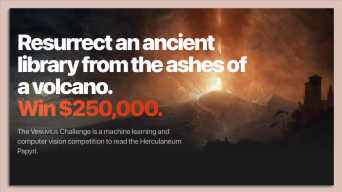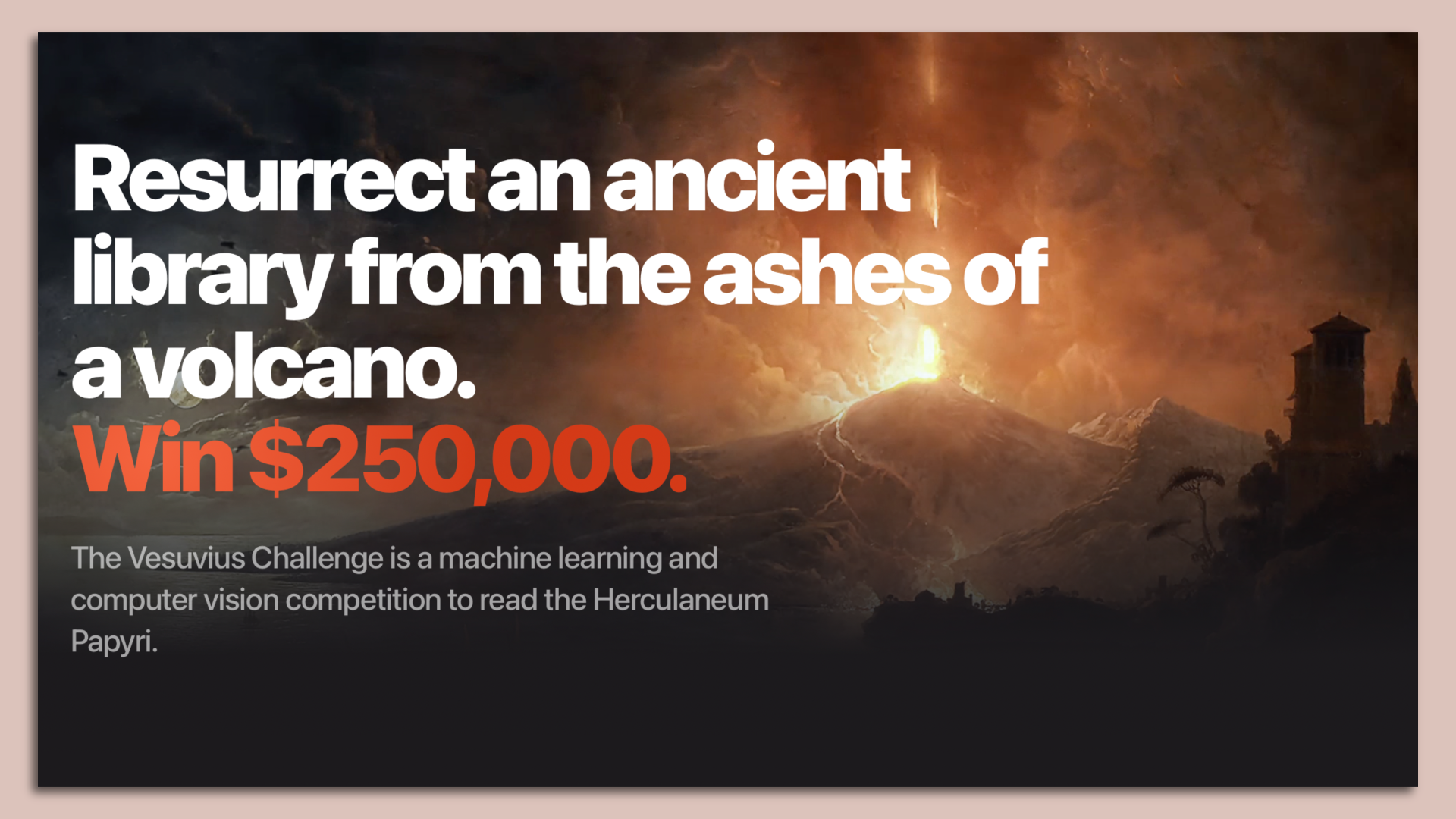
Image via Vesuvius Challenge website
Former GitHub CEO Nat Friedman is helping fund $250,000 in prizesaimed at seeing if someone can use machine learning and computer vision to make sense of papyrus scrolls that were buried by the deadly Mount Vesuvius eruption nearly 2,000 years ago.
Why it matters: The eruption obscured the text in the scrolls, but also preserved them such that modern technology might be able to uncover what was written.
Details: The scrolls, known as the Herculaneum papyri, were part of a library in a villa once owned by the father-in-law of Julius Caesar. The villa, buried in 79 A.D., was discovered by a farmer in 1750, but many scrolls were destroyed by early attempts to open and decode them.
- More recently, X-rays have allowed the 600 remaining scrolls to be virtually unrolled, but they have remained unreadable.
- Friedman and co-sponsor Daniel Gross are funding $250,000 in prizes, with $50,000 going to individuals or teams who can detect ink from X-rays of the document. Another $150,000 will be shared among those who are able to read at least four separate passages of at least 140 characters long.
What they're saying: Friedman said that researchers have recently proven that machine learning can help recognize ink in papyrus fragments, convincing him the tech is up to the challenge.
- "We live in an age of miracles," he told Axios. "We're using high energy physics and AI to peer into the past."
Source: Read Full Article
